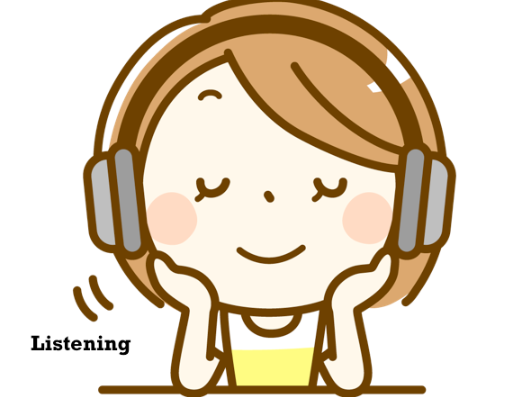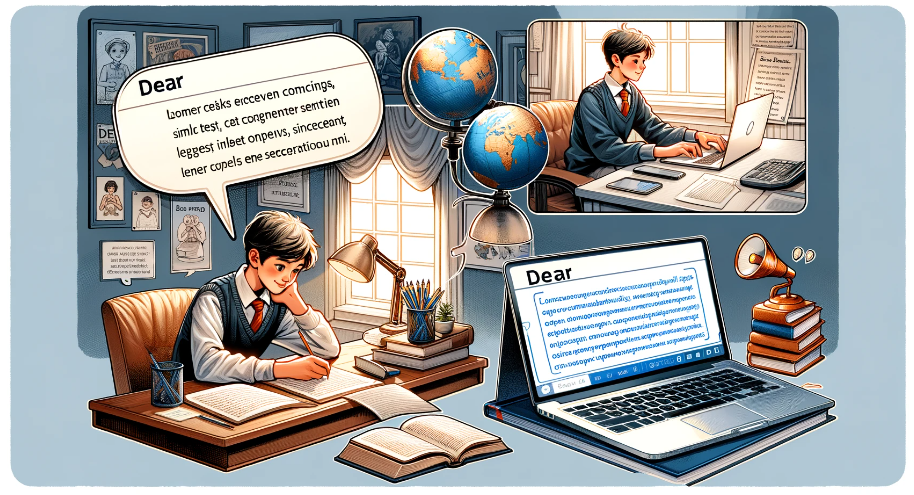E-Mail Advance Class 目安 200 単語 (Guideline 200 Words)
Lesson 1
あなたの留学体験について家族に報告するメールを書きましょう。
(Write an email to your family describing your study abroad experience.)
Lesson 2
夏休みの計画を友達に共有し、一緒に過ごす提案をするメールを書きましょう。
(Write an email to a friend sharing your plans for the summer vacation and suggesting to spend some time together.)
Lesson 3
学校のプロジェクトで困っていることを教師に説明し、助けを求めるメールを書きましょう。
(Write an email to a teacher explaining the difficulties you are facing with a school project and asking for help.)
Lesson 4
留学生としての日常生活や文化の違いについて友達に書くメールを書きましょう。
(Write an email to a friend about your daily life as an exchange student and the cultural differences you’ve observed.)
Lesson 5
あなたが参加しているクラブの活動とその楽しさについて友達に伝えるメールを書きましょう。
(Write an email to a friend describing the activities of the club you are part of and how much fun it is.)
Lesson 6
留学プログラムの応募についての質問をプログラムコーディネーターに尋ねるメールを書きましょう。
(Write an email to the program coordinator asking questions about applying for a study abroad program.)
Lesson 7
家族に最近学校で起こった面白い出来事を伝えるメールを書きましょう。
(Write an email to your family telling them about a funny incident that recently happened at school.)
Lesson 8
英語の先生に映画のレビューの宿題について質問するメールを書きましょう。
(Write an email to your English teacher asking questions about a homework assignment to review a movie.)
Lesson 9
友達にあなたの好きな音楽バンドとその魅力について語るメールを書きましょう。
(Write an email to a friend talking about your favorite music band and what makes them appealing to you.)
Lesson 10
学校のカウンセラーにあなたの進路に関する悩みを相談するメールを書きましょう。
(Write an email to your school counselor discussing your concerns about your future career path.)
Lesson 11
先生に提出するレポートに関する質問とアドバイスを求めるメールを書きましょう。
(Write an email to your teacher asking questions and seeking advice about a report you have to submit.)
Lesson 12
友達に最近行った旅行の経験と感想を共有するメールを書きましょう。
(Write an email to a friend sharing your experiences and thoughts on a recent trip you took.)
Lesson 13
学校の文化祭の準備とあなたの役割について親に報告するメールを書きましょう。
(Write an email to your parents reporting on the preparations for the school cultural festival and your role in it.)
Lesson 14
友達に学校の新しい科目についての意見と感想を書くメールを書きましょう。
(Write an email to a friend expressing your opinion and thoughts about a new subject at school.)
Lesson 15
留学中に訪れた国の文化と経験について教師に報告するメールを書きましょう。
(Write an email to a teacher reporting about the culture and experiences of the country you visited during your study abroad.)
Lesson 16
友達に最近始めた新しい趣味について詳しく説明するメールを書きましょう。
(Write an email to a friend explaining in detail about a new hobby you recently started.)
Lesson 17
家族に学校生活の現状と感じていることを伝えるメールを書きましょう。
(Write an email to your family about your current school life and how you are feeling about it.)
Lesson 18
英語の先生に詩の分析の宿題について助言を求めるメールを書きましょう。
(Write an email to your English teacher seeking advice on a homework assignment to analyze a poem.)
Lesson 19
友達に最近見た映画の感想と推薦をするメールを書きましょう。
(Write an email to a friend sharing your thoughts on a recent movie you watched and recommending it.)
Lesson 20
学校の先生に将来の大学進学についてのアドバイスを求めるメールを書きましょう。
(Write an email to a school teacher seeking advice about college applications for your future studies.)
Lesson 21
友達に共通の趣味について深く語り合うメールを書きましょう。
(Write an email to a friend to have a deep conversation about a hobby you both share.)
Lesson 22
親に学校の新しいクラブ活動について紹介するメールを書きましょう。
(Write an email to your parents introducing a new club activity at school.)
Lesson 23
留学先でのホームステイ体験について学校の友達に報告するメールを書きましょう。
(Write an email to your school friends reporting about your homestay experience while studying abroad.)
Lesson 24
英語の先生に文学作品の分析の宿題についての理解を深めるための質問をするメールを書きましょう。
(Write an email to your English teacher asking questions to deepen your understanding of a homework assignment on analyzing a literary work.)
Lesson 25
友達に最近参加したボランティア活動の経験を共有するメールを書きましょう。
(Write an email to a friend sharing your experience participating in a recent volunteer activity.)
Lesson 26
家族に学校のスポーツチームでの自分の進歩と経験を報告するメールを書きましょう。
(Write an email to your family reporting your progress and experiences in the school sports team.)
Lesson27
学校の先生に自分の学習目標とそれを達成するためのサポートを求めるメールを書きましょう。
(Write an email to a school teacher discussing your learning goals and asking for support to achieve them.)
Lesson 28
友達に共通の興味を持つ本や映画について意見交換するメールを書きましょう。
(Write an email to a friend to exchange opinions on a book or movie of common interest.)
Lesson 29
留学先の学校での成果と挑戦について家族に報告するメールを書きましょう。
(Write an email to your family about your achievements and challenges at the school where you are studying abroad.)
Lesson 30
学校のプロジェクトでチームリーダーになったことを友達に報告し、感想を共有するメールを書きましょう。
(Write an email to a friend reporting that you became a team leader in a school project and sharing your thoughts about it.)


















